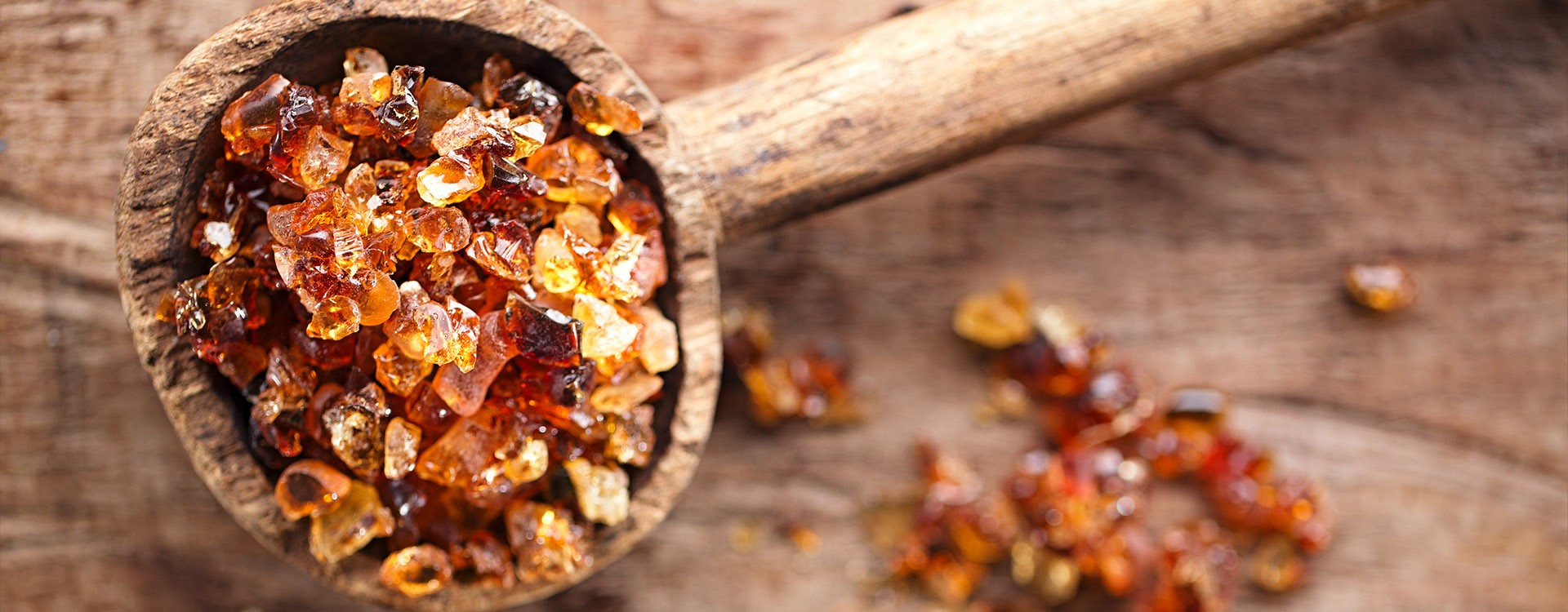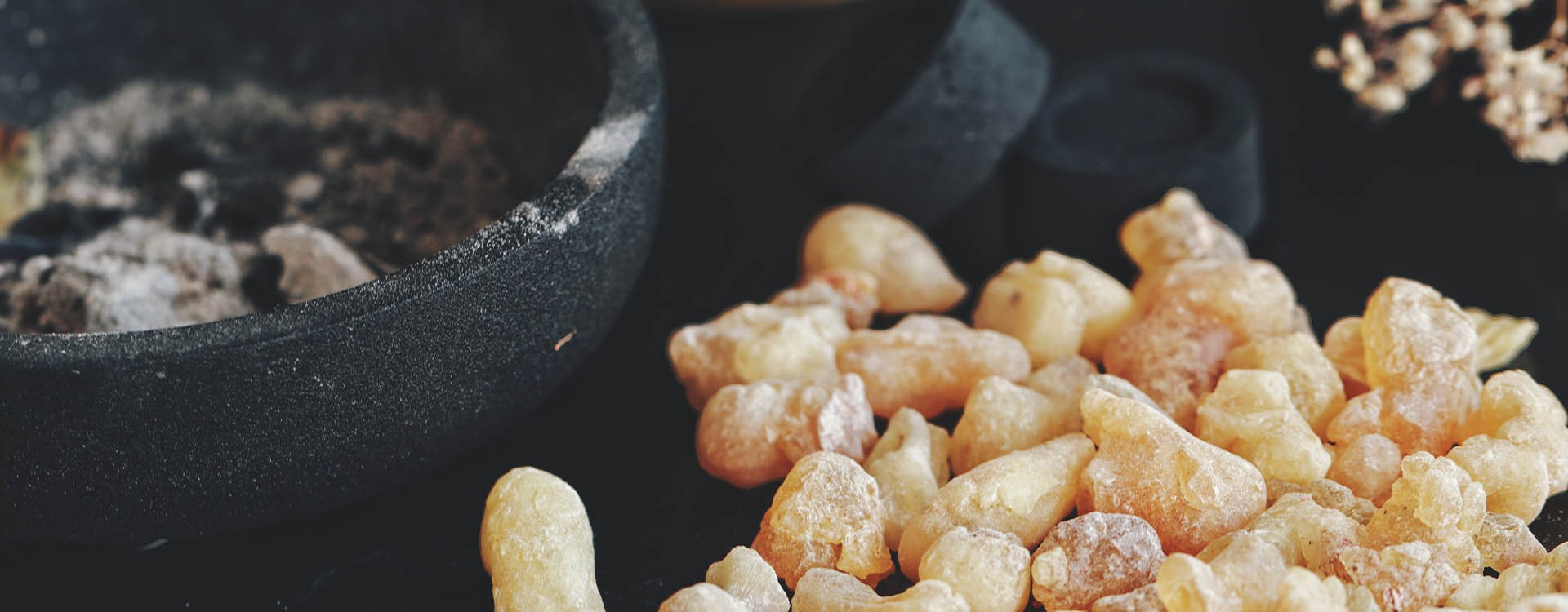All you need to know about gum arabic - Real and Roots

Discover gum arabic: origins and uses
The history of gumarabic dates back to antiquity, when it was already used by ancient civilizations for its adhesive and medicinal properties. Originating in sub-Saharan Africa and the Middle East, gumarabic was a valuable commodity on trans-Saharan trade routes.
Over the centuries, gumarabic has conquered the world thanks to its many uses, from cooking and industry to traditional medicine. Its name "arabic" comes from its association with Arab traders, who played an important role in its worldwide distribution. Today, gumarabic remains an essential ingredient in many fields and continues to fascinate with its amazing properties and versatility. In this in-depth exploration, we'll discover the origins and historical uses of this natural substance, as well as its multiple applications in the modern world.
Properties and composition of gum arabic
gumarabic is a natural resin with remarkable physical and chemical characteristics. Physically, it appears as small tears, granules or translucent lumps, often white to pale yellow in color. Its texture is sticky and viscous, giving it great adhesion.
Chemically speaking, gommearabique consists mainly of polysaccharides, notably arabinose, galactose, rhamnose and glucuronic acid. These polysaccharides are responsible for its thickening and stabilizing properties, making it a natural gelling agent used in many food and industrial products.
gumarabic is a versatile substance, widely used in various industries due to its unique properties. Here are some of its main uses:
As afood additive, gum arabic is frequently used for its thickening, stabilizing and emulsifying properties. It is found in soft drinks, candies, ice creams, sauces, bakery products and processed foods. It is also used to create glossy coatings on candies and dragees.
gumarabic is used in the manufacture of medicinal tablets, capsules and syrups. Its binding and emulsifying properties facilitate the shaping of pharmaceutical products while improving their stability. It is also used as an excipient in certain medicinal formulations. In cosmetics, gum arabic is used in make-up products, lotions, creams and shampoos. It acts as a natural thickener, giving products a smoother texture and improving their ability to blend harmoniously.
gumarabic is avaluable natural resource , offering functional benefits while being widely recognized for its safety. Its use in a variety of industries is testament to its great value and versatility in the modern world. At Real and Roots, we are committed to providinghigh-quality gumarabic, with all its properties intact. We ensure that our gum arabic retains its remarkable characteristics, making it versatile and useful in a variety of industries.
Gum arabic harvesting and extraction process
gumarabic is mainly produced by two tree species,Acacia senegal and Acacia seyal, which are native to sub-Saharan Africa. These trees belong to the Fabaceae family and grow mainly in arid zones, such as savannahs, deserts and semi-deserts. Gum arabic is produced when the bark of the trees is incised or wounds are inflicted on their branches, allowing the resin to flow out.
At Real and Roots, gum arabic is extracted using traditional methods that respect the environment and sustainable practices. Local collectors carefully incise the bark, allowing the trees to naturally regenerate their gum without suffering significant damage. This traditional approach ensures the preservation of forest resources while supporting local communities who have been practicing the ancestral art of gum arabic harvesting for generations.
Alongside traditional methods, Real and Roots is also committed to modern extraction approaches that guarantee the quality and purity of gum arabic. State-of-the-art technologies are used to process and sort the harvested gum, ensuring a final product that meets the most stringent international standards.
By choosing gommearabique at Real and Roots, you are supporting an ethical and sustainable approach to harvesting and extraction that respects the environment and local communities. The gommearabique obtained in this way retains all its beneficial natural properties, making this product a valuable and versatile resource for a variety of applications in industry, health and everyday life.
Real and Roots gum arabic and its health benefits
gumarabic is renowned for its benefits on digestion and intestinal health. Due to its thickening and adhesive properties, it acts as a natural prebiotic, promoting the growth of good bacteria in the colon. This prebiotic action can help maintain a healthy balance of intestinal flora, improving digestion and promoting gastrointestinal comfort.
What's more, gum arabic has the ability to absorb water and form a soft gel in the digestive tract, which can help relieve symptoms of irritable bowel syndrome (IBS) and ease episodes of digestive discomfort.
gumarabic is also recognized for its anti-inflammatory and healing properties. It can be used topically to soothe skin irritations, light burns and minor wounds. Its adhesive power enables it to form a protective film on the skin, promoting cell regeneration and the healing process.
Applying gumarabic to mucous membranes can also help soothe irritations of the mouth and throat, particularly in cases of inflammation or sore throat.
In traditional and complementary medicine, gum arabic has been used for centuries to treat a variety of ailments. Because of its beneficial properties on digestion, it is sometimes used to relieve symptoms of gastric acidity and ulcers.
What's more, some cultures use gumarabic for itssoothing properties on the respiratory system, notably to calm coughs and respiratory tract irritations.
It is important to note that although gumarabic has many health benefits, its use must be adapted to each individual. As with any dietary supplement or treatment, it is advisable to consult a healthcare professional before undertaking any therapeutic use of gum arabic. By judiciously integrating this natural substance into your diet or skincare routine, you can take advantage of its multiple benefits to improve your overall health and well-being.
Gum Arabic in industry and crafts
gumarabic plays an essential role in the food and pharmaceutical industries, thanks to its functional properties and safety. In the food industry, it is widely used as a food additive, offering thickening, stabilizing and emulsifying properties. It is present in a wide range of products, including soft drinks, confectionery, dairy products, sauces and desserts. As a stabilizer, it improves the texture, appearance and preservation of many food products.
In the pharmaceutical industry, gumarabic is used as an excipient in drug formulation. Thanks to its binding and emulsifying properties, it facilitates the manufacture of tablets, capsules and syrups. It also helps improve the stability of medicinal formulations, guaranteeing their efficacy and safety.
Beyond its industrial uses, gumarabic is also appreciated in the craft, paint and ink industries. Thanks to its adhesive and thickening properties, it is used as a binder in watercolor paints, gouaches and inks. It improves the adhesion of pigments to paper or other supports, while giving works a smooth, fluid texture. In the craft industry, gum arabic is used to create natural glues, notably in the manufacture of glued papers or artistic collages. Its adhesive power makes it a popular choice for handicrafts requiring a non-toxic, environmentally-friendly glue.
All in all, gumarabic occupies a prime position in the food and pharmaceutical industries, helping to improve the texture and stability of many products. It also offers remarkable advantages in crafts, paint and ink, enabling the creation of authentic, high-quality works of art. Its versatility and harmlessness make it a valuable natural resource, appreciated worldwide for its many industrial and artistic applications.
Precautions for use and possible side effects
Although gum arabic is generally considered safe, certain precautions must be taken for optimal and safe use:
- Appropriate dosage : It is important to respect the recommended doses to avoid any undesirable effects. Overdosage can lead to digestive problems, such as bloating or stomach upset.
- Use as part of a balanced diet: If you use gum arabic as a food additive, make sure it forms part of a balanced and varied diet. Do not use gum arabic as a substitute for a healthy diet.
- Potential allergies: Some people may be allergic to gum arabic. If you develop allergy symptoms such as rash, itching or breathing difficulties after consuming or using gum arabic, discontinue use immediately and consult a health care practitioner.
- Medical advice: If you are pregnant, breast-feeding, undergoing medical treatment or taking medication, it is advisable to consult your doctor before using products containing gum arabic.
Although gum arabic is generally well tolerated, there are some contraindications that should be taken into account :
- Known allergies: People allergic to components of gum arabic, such as polysaccharides, should avoid its use. Allergic reactions can vary in intensity, from mild symptoms such as itching, to more severe reactions requiring emergency medical intervention.
- Pre-existing digestive problems: People with chronic digestive problems such as irritable bowel syndrome (IBS) should be cautious when using gum arabic. While it may be beneficial for some, it may aggravate symptoms in others.
- Choking hazard: When used in granular or chunky form, gum arabic can present a choking hazard, particularly for young children. It is therefore important to store products containing gum arabic out of their reach.
By observing these precautions and taking into account any contraindications, you can enjoy the many benefits of gum arabic in complete safety. In case of doubt or adverse reaction, it's always best to consult a health professional for advice tailored to your individual situation.
Gum arabic, a versatile and precious resource
gumarabic plays an essential role in a wide range of fields, from industry to health and handicrafts. Its versatility and unique properties make it a valuable natural resource, appreciated across the ages and cultures. Its use in the food and pharmaceutical industries improves the texture, stability and preservation of many products, while offering a natural and safe alternative to chemical additives.
In crafts, paint and ink, gumarabic offers an environmentally-friendly solution for creating authentic, high-quality works of art. In traditional and complementary medicine, gumarabic is a natural remedy appreciated for its benefits on digestion and intestinal health, as well as for its soothing properties on the skin and respiratory tract.
In conclusion, gumarabic is much more than just natural resin. It is a treasure trove of multiple virtues, whose importance extends across a wide range of industries and health practices. Its judicious and environmentally-friendly use reminds us of the importance of preserving and exploiting natural resources in a sustainable way, for the benefit of all.



